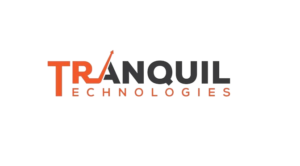On-site SEO
-a way forward to webpage optimization-
 On-site SEO also called on-page SEO, is the process of optimizing webpages and the content contained therein for users, including search engines, to rank higher in SERPs. This practice of improving your SEO ranking is referred to as SEO Marketing, that is vital for escalating your visibility on search engines and attract more organic traffic. Common features associated with on-site SEO are content optimization for search intent, title tags, URLs and internal links. Search engines like google, bing, etc. refer to on-site SEO while ranking the websites. They use keywords and such other related elements of on-page SEO to check weather or not a page matches a user’s search intent and if it does so, the search engine serves it to the users. This technique is applied directly to the web pages to enhance their visibility and rankings in SERPs, i.e., search engine result pages. It involves optimizing content, HTML source code and on-page elements like internal external links, header tags, URL structure, media, meta tags, meta descriptions, etc.to align with search engine algorithms.
On-site SEO also called on-page SEO, is the process of optimizing webpages and the content contained therein for users, including search engines, to rank higher in SERPs. This practice of improving your SEO ranking is referred to as SEO Marketing, that is vital for escalating your visibility on search engines and attract more organic traffic. Common features associated with on-site SEO are content optimization for search intent, title tags, URLs and internal links. Search engines like google, bing, etc. refer to on-site SEO while ranking the websites. They use keywords and such other related elements of on-page SEO to check weather or not a page matches a user’s search intent and if it does so, the search engine serves it to the users. This technique is applied directly to the web pages to enhance their visibility and rankings in SERPs, i.e., search engine result pages. It involves optimizing content, HTML source code and on-page elements like internal external links, header tags, URL structure, media, meta tags, meta descriptions, etc.to align with search engine algorithms.
-Elements of On-site SEO-
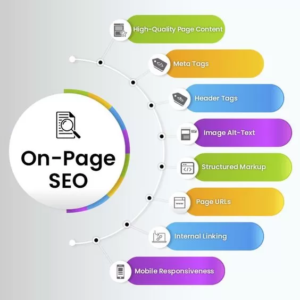
- Internal Links : Internal links (also inbound links) are among the key elements of on-site SEO. These links are the links to other pages on your website. These links, when clicked takes user to another page on your own website, rather than a completely
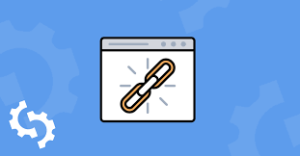 different website. It helps keep user stay longer than usual on your website, which would enhance its search engine’s ranking. The longer the user stays on your website, the better and higher the ranking, as the time duration for which the user stays on your website is directly proportional to search engine rankings. Here comes the concept of Link Building, the process of getting other websites to link to pages on your website, that boosts the authority of your webpage in front of search engines. Search engines like google and bing rank websites based on UX, i.e., user experience, which can be easily estimated through the time a user spends on your website.
different website. It helps keep user stay longer than usual on your website, which would enhance its search engine’s ranking. The longer the user stays on your website, the better and higher the ranking, as the time duration for which the user stays on your website is directly proportional to search engine rankings. Here comes the concept of Link Building, the process of getting other websites to link to pages on your website, that boosts the authority of your webpage in front of search engines. Search engines like google and bing rank websites based on UX, i.e., user experience, which can be easily estimated through the time a user spends on your website. - Content quality and relevance : Content is the main body of your web page. It should be relevant and well-written. It refers to all the attributes of the content contained in the
 website, that must aim to satisfy user intent, thereby keeping search engine ranking criteria in mind. It inculcates the creation of valuable and utilitarian content that results in increased user engagement. The content should be such that is fulfills the requirements of the readers or addresses and resolves their queries. Such content is called engaging content, i.e., the content that users find relatable. Relevancy symbolizes the use of accurate keywords, that matches with the ones used by the users while searching for something online. This further results in enhancing the content visibility in SERPs. It is measured through bounce rate, CTR, etc.
website, that must aim to satisfy user intent, thereby keeping search engine ranking criteria in mind. It inculcates the creation of valuable and utilitarian content that results in increased user engagement. The content should be such that is fulfills the requirements of the readers or addresses and resolves their queries. Such content is called engaging content, i.e., the content that users find relatable. Relevancy symbolizes the use of accurate keywords, that matches with the ones used by the users while searching for something online. This further results in enhancing the content visibility in SERPs. It is measured through bounce rate, CTR, etc. - Image Optimization : It refers to optimization of images on your website so that your pages rank higher in search engine rankings. It is done to enhance your chances to rank more prominently in organic search results and therefore, drive more traffic to your website. It benefits both users and search engines; users can benefit from increased
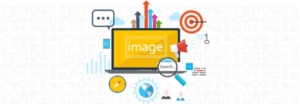 ranking and excess traffic, whereas it makes it easier for search engines to understand and rank your website in an unbiased way. There are multiple tactics to to optimize images on web pages like by resizing and compressing, giving them descriptive file names, adding alt text or alternative text, choosing the right image format, make use of responsive image scaling, create an image sitemap, use CDN (Content Delivery Network) etc. Optimized images load faster that enhances the user experience, which is again fruitful for both users and admins.
ranking and excess traffic, whereas it makes it easier for search engines to understand and rank your website in an unbiased way. There are multiple tactics to to optimize images on web pages like by resizing and compressing, giving them descriptive file names, adding alt text or alternative text, choosing the right image format, make use of responsive image scaling, create an image sitemap, use CDN (Content Delivery Network) etc. Optimized images load faster that enhances the user experience, which is again fruitful for both users and admins.
- URL Structure : URL stands for uniform resource locator, more commonly known as “web addresses”, specifies location of a resource (like web page) on the internet. It is a
 human readable text that replaced the IP address. It consists of a protocol, domain name and path, written as follows: ” protocol://domain name/path”. It is also referred to as URL structure. Functions of its various components is as follows –
human readable text that replaced the IP address. It consists of a protocol, domain name and path, written as follows: ” protocol://domain name/path”. It is also referred to as URL structure. Functions of its various components is as follows –
- Protocol- It indicates how a browser should retrieve information about a resource. It is denoted as http:// or https:// (where ‘s’ stands for secure).
- Domain- Domain name is the unique address where a website is located. It consists of further two elements, namely sub domain and top-level domain. Sub domain is the part of domain that comes before the main “root” domain and are created to organize content on your website. Eg.- www. The top level domain or TLD is, for eg., .com, .org, .in, etc.
- Path- It refers to the exact location of a page, post or a file.
Importance of URL from SEO point of view is that it enhances and improves user experience, it also acts as the minor ranking factors used by search engines while rankings, etc.
- Crawl Your Website : Crawling is the process in which search engine bots, also known as crawlers or spiders, discover content on a website. This content maybe anything like text, images or media, video or such other files that are accessible to bots. It is basically a discovery process, used to discover new and updated content. Crawlers follow links on
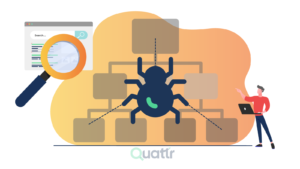 your website to find new pages to crawl and index. It is one of the important elements of on-site SEO that enables search engines to understand your website’s content and relevance. If a web page isn’t crawled, it won’t appear in SERPs, making it difficult for prospective customers to find you. Though it doesn’t guarantee ranking, but is still an ideal element of on-site SEO as it helps search engines provide accurate and relevant results to user queries. Therefore, it has proved to be an ideal tactic for users, including search engines. It helps improve customer experience and increases organic, unpaid traffic. Tips for optimizing crawling :-
your website to find new pages to crawl and index. It is one of the important elements of on-site SEO that enables search engines to understand your website’s content and relevance. If a web page isn’t crawled, it won’t appear in SERPs, making it difficult for prospective customers to find you. Though it doesn’t guarantee ranking, but is still an ideal element of on-site SEO as it helps search engines provide accurate and relevant results to user queries. Therefore, it has proved to be an ideal tactic for users, including search engines. It helps improve customer experience and increases organic, unpaid traffic. Tips for optimizing crawling :-
- Creating a sitemap.
- Optimizing a website structure.
- Use internal linking.
- Use meta tags.
- Monitor crawl rate.
- Include Alt Text : Alt text(alternative text), is a text that is displayed in place of an
 image on a webpage if the image fails to load on a user’s screen. It is a screen-reading tool that describes images to visually impaired readers and the one’s with low vision. It is also indexed by crawlers or spiders to better understand image and content on your page. It also helps search engines in crawling and ranking your website. It is an “image-specific” text that provides three key benefits- accessibility, user experience, and image traffic. Smart tips for adding a good alt text :
image on a webpage if the image fails to load on a user’s screen. It is a screen-reading tool that describes images to visually impaired readers and the one’s with low vision. It is also indexed by crawlers or spiders to better understand image and content on your page. It also helps search engines in crawling and ranking your website. It is an “image-specific” text that provides three key benefits- accessibility, user experience, and image traffic. Smart tips for adding a good alt text :
- Specificity is the key.
- Integrate keywords.
- Avoid overstuffing.
- Decorative images.
- Skip redundant pages.
How to add alt text to images?
- Keyword Cannibalization Audit : Keyword cannibalization is an SEO issue that occurs when multiple pages on your website targets same keywords and serves same purpose, therefore harming each other’s search engine rankings. Search engines can
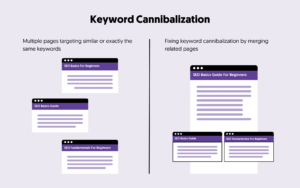 easily determine which page is the most relevant result for associated queries and accordingly exaggerate and enhance its ranking, thereby deteriorating the ranking of another. Apart from repetitive keywords, their are certain other reasons for keyword cannibalization, like:
easily determine which page is the most relevant result for associated queries and accordingly exaggerate and enhance its ranking, thereby deteriorating the ranking of another. Apart from repetitive keywords, their are certain other reasons for keyword cannibalization, like:
- Publish similar pieces of content over time.
- Optimize similar pages for the same keyword.
- Publish a new version of a page without redirecting the old one.
- Create different paths to the same product category.
- Don’t optimize sub category pages.
For keyword cannibalization auditing, you need to identify pages that are targeting similar keywords and compare their performance and metrics using site crawler.
- Optimize content.
- Remove certain posts.
- Consolidate content.
- Use redirects.
- Canonical tags.
- Mobile friendliness : This element does matter in SEO, especially on-site SEO. It is a measure of how well a website is designed and optimized to load on a mobile device like
 smartphones or tablets. In other words, your website should be such, that it shrinks down to fit any screen and still be able to perform its functionalities. It should be accessible to the users, i.e., they should easily be able to consume the content. At the same time, it should be easy to navigate and it should accomplish the goals the same way as the desktop does. It can be achieved in two ways :
smartphones or tablets. In other words, your website should be such, that it shrinks down to fit any screen and still be able to perform its functionalities. It should be accessible to the users, i.e., they should easily be able to consume the content. At the same time, it should be easy to navigate and it should accomplish the goals the same way as the desktop does. It can be achieved in two ways :
- Creating a separate website for mobile devices and redirect mobile users to that site.
- Using mobile first or responsive web designs.
Mobile friendliness is vital for SEO, it is the ranking signal in any search engine’s algorithm. Mobile friendly websites will outrank non-mobile friendly sites in mobile search results. So, if your website relies on majority traffic from mobile users, this element is vital for SEO, especially on-page SEO. This particular element focuses on mobile users and works for enhancing their experience thereby making it seamless.
- Page loading speed : As the name suggests, it is a measure of how fast the content on your web page loads. Page speed (also called load speed), is a performance metric that results in positive or negative UX. From the point of view of SEO, having a fast page speed enhances a user’s experience in a positive way, that benefits both users and search
 engines. It is another indicator of SEO ranking; the faster the page loads, the higher it ranks in SERPs. It is one among the many key tasks of web development agencies, who ensure that the website is well structured. It is an on-site SEO element, concerned with both mobile devices and desktop computers. Certain factors affecting page load speed are:
engines. It is another indicator of SEO ranking; the faster the page loads, the higher it ranks in SERPs. It is one among the many key tasks of web development agencies, who ensure that the website is well structured. It is an on-site SEO element, concerned with both mobile devices and desktop computers. Certain factors affecting page load speed are:
- Web hosting or server
- Size of the content (text, media, images, etc.)
- Add on features on your website.
- Caching
- Unnecessary Redirects
- CDN (Content Delivery Network)
- Plugins
Therefore, faster loading speed is vital for seamless user experience and higher organic ranking as the opposite would lead to increased bounce rate.
- Add Schema : Schema or schema markup (also called structured data), is a language used by search engines to read and understand the content on your webpage. It is a semantic code you add to your webpages, so that search engines could easily acknowledge
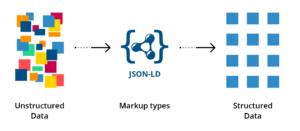 your content. It must be added to only those pages where content you used to create schema, is present. It helps search engines display content of your website in a rich format. There are various types of schema like product, review, article, organization, local business and course schema. Its importance lies in the following benefits it offers to users as well as search engines:
your content. It must be added to only those pages where content you used to create schema, is present. It helps search engines display content of your website in a rich format. There are various types of schema like product, review, article, organization, local business and course schema. Its importance lies in the following benefits it offers to users as well as search engines:
- It helps search engines understand your content more effectively and rank accordingly.
- Rich appearance provided by it can result in increased CTR (click-through rate) and further lead to increased traffic.
- It can give you a competitive edge. Many sites still aren’t using this code. So when you do, you are getting ahead of them. It makes your website stand out.
All these benefits can contribute to overall better SEO performance for your site.
How to implement schema markup on your website ?
- Meta tags : These are powerful HTML elements that tell search engines, important information about your web page and have a huge effect on SEO and UX. They tell search engines as to how the should display your web page in search results. They also tell web
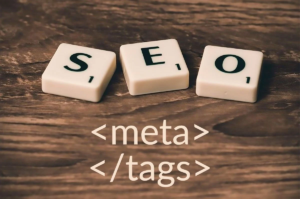 browsers how to display it to visitors or users. They control the behavior of search engine crawling and indexing. They play a crucial role in influencing a website’s appearance and can impact its click-through rate (CTR). They are usually added in section of HTML. Every web page has a meta tag but they are only visible in HTML code. 6 most important meta tags for SEO are:
browsers how to display it to visitors or users. They control the behavior of search engine crawling and indexing. They play a crucial role in influencing a website’s appearance and can impact its click-through rate (CTR). They are usually added in section of HTML. Every web page has a meta tag but they are only visible in HTML code. 6 most important meta tags for SEO are:
- Meta title– It is nothing, but the page title that google and most search engines show in search results. An ideal title tag shouldn’t be neither too short nor too long.
- Meta description– It is the summary of the page’s content. Search engines often use it for the snippet in search results. Its job is to attract users with a short but detailed and relevant summary of the entire content of your web page, that must match with the user’s search query. It is not a ranking factor.
- Meta robots– They tell search engines, if and how they should crawl your web pages.
- Meta viewport– These tags set the visible area of a web page. It is used to guide the browser as to how to render the page on a different page on diverse screen sizes like mobiles, desktops, etc.
- Meta charset– They set the character encoding for the webpage, i.e., it tells the browser how the text on your webpage should be displayed. Two most common charset tags are UTF-8 and ISO-8859-1.
- Meta refresh redirect– They tell the browser to redirect he user to a different URL after a set amount of time.
An ideal meta tag must be under 120 characters, avoid keyword stuffing, match search intent and must be accurate, descriptive and concise.
- External links : Also known as outbound linking, refers to linking the pages of your website to other websites. It is a powerful SEO tool that helps to increase the credibility and authority of your website in the eyes of search engines. It is basically a hyperlink on a
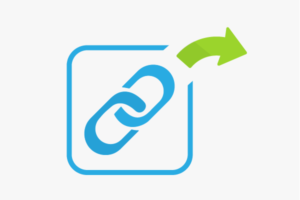 website that points to a different domain. Such links, when come from authoritative and relevant sources, can boost the ranking and reputation of your website. These links help search engines and users understand the niche of your site and provide additional value.
website that points to a different domain. Such links, when come from authoritative and relevant sources, can boost the ranking and reputation of your website. These links help search engines and users understand the niche of your site and provide additional value.
Using external links help:
- Show search engines, how your content relates to other pages.
- link building, i.e., it helps build connections with other websites, that could result in exposure, backlinks and traffic.
- Provides value to the users.
Further, it helps SEO in the following two ways:
- Provides value to the users, resulting in improved UX, that further results in better rankings.
- They help the receiving domain’s SEO as search engines see them as votes of confidence in the linked webpages. And each vote signifies the content on that page as relevant, credible and valuable.
- Identify Target keywords : Target keyword is a word or a phrase that websites use to rank in search engines in order to attract their desired potential customers. They are essential for search engine crawlers to find out the information contained within your
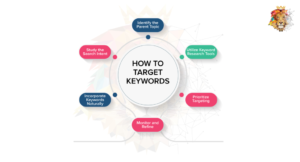 website. Therefore they determine the kind of traffic you receive on your website. Use of irrelevant keywords might hamper the user experience negatively as you won’t be delivering the desired information. This poor user experience would in turn result in increased bounce rate, lower dwell time and lesser conversions. All this can lead to lower ranking in organic search results. Identification of target keywords stands important as it helps in overall improvement of SEO performance.
website. Therefore they determine the kind of traffic you receive on your website. Use of irrelevant keywords might hamper the user experience negatively as you won’t be delivering the desired information. This poor user experience would in turn result in increased bounce rate, lower dwell time and lesser conversions. All this can lead to lower ranking in organic search results. Identification of target keywords stands important as it helps in overall improvement of SEO performance.
3 main ways to identify target keywords are:
- Brainstorm
- Research
- Review statistics.
- Incorporate visual content : Visual content encompasses the use of images, videos, graphics, illustrations and such other media, that is used to deliver valuable information in an engaging format. Such content is eye catching and is suitable to drag the attention
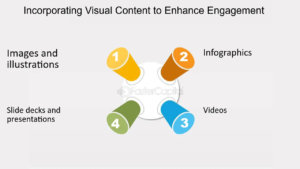 of the viewers easily. Incorporating such visual content on your web pages helps entice viewers and increases CTR and website traffic. It aims to build trust with the audience and increases brand awareness. Visuals are generally known for driving potential traffic to your website. It is one of the most vital elements of on-site SEO, that is meant to increase your chances of visibility in SERPs. Such content makes your web page more engaging and interesting. It is also lucrative for the owners in a way that it keeps the visitors on your page for a longer duration of time. It makes it easier for the user to understand the content and is comparatively, a simpler way to convey the valuable information to target audience.
of the viewers easily. Incorporating such visual content on your web pages helps entice viewers and increases CTR and website traffic. It aims to build trust with the audience and increases brand awareness. Visuals are generally known for driving potential traffic to your website. It is one of the most vital elements of on-site SEO, that is meant to increase your chances of visibility in SERPs. Such content makes your web page more engaging and interesting. It is also lucrative for the owners in a way that it keeps the visitors on your page for a longer duration of time. It makes it easier for the user to understand the content and is comparatively, a simpler way to convey the valuable information to target audience.
All of these elements collectively work towards optimizing your website and the content contained therein. This is ideal for the betterment of overall SEO’s performance. Also, they are vital for higher rankings in organic search results and therefore, assures quality.
Moreover, one shouldn’t shy away from hiring a specialized web designing and development agency, as professional expertise can significantly result in more precised outcomes.
WHY DO YOU NEED A GOOD WEBSITE DESIGN AND DEVELOPMENT AGENCY ?
